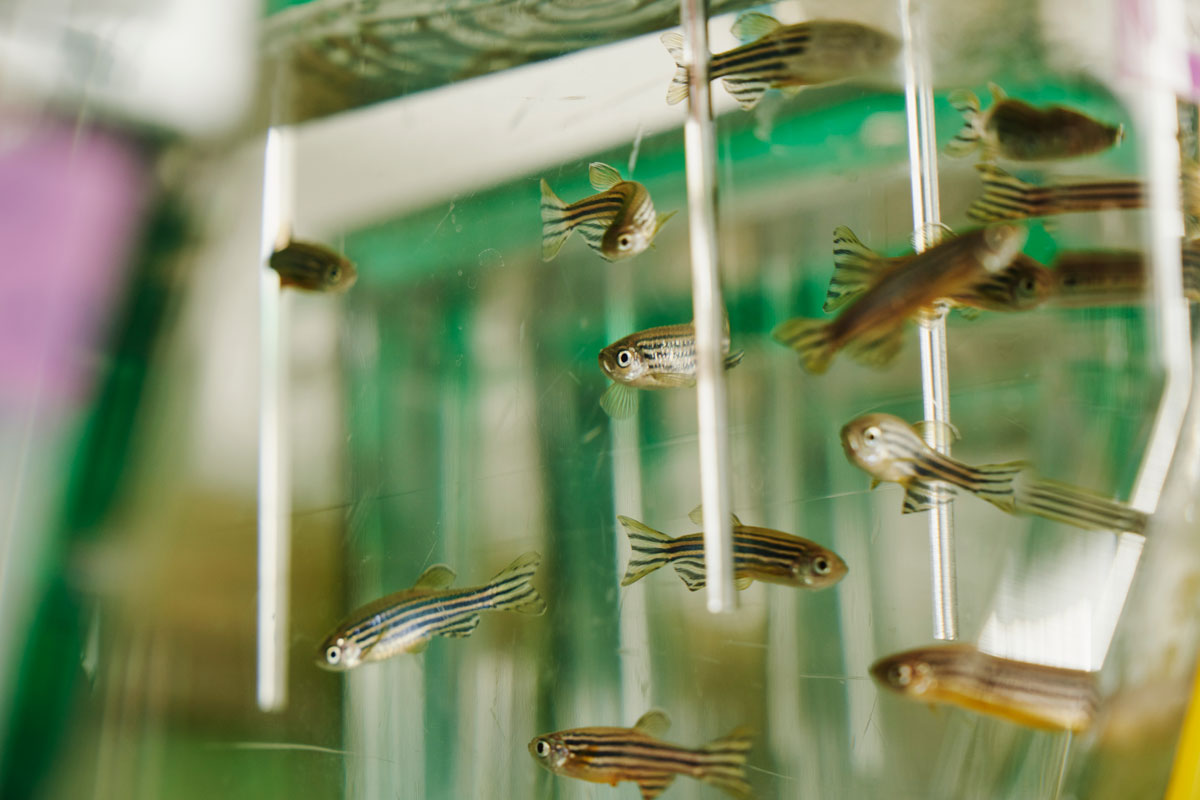In the Zebrafish Tank
Rapidly developing eggs and eyes offer unique insight into cell behaviors.
Zebrafish are freshwater fish that live in small streams and pools throughout India, Pakistan, Myanmar, and Nepal. Zebrafish are popular among fish hobbyists because they’re very easy to keep alive in small tanks of fresh water without much effort or expertise. These same principles and more make zebrafish especially well suited for biological investigations. Zebrafish lay hundreds of eggs at once (called a clutch) that, when fertilized, develop very rapidly. For example, a zebrafish eye develops into an organ that can see within approximately three days. The same process takes nearly three weeks in mice and almost three months in humans. Moreover, because the zebrafish embryo is so small (about the size of a sesame seed), and develops outside of the mother and is nearly transparent, scientists can watch its development over time and gain unprecedented insights about cell behaviors in a living organism. In Biology 351L: Developmental Biology, as well as in my research lab, we’re curious about how eyes and brains grow and develop. In particular, we want to identify and study the molecular and cellular cues that influence whether cells divide, differentiate into neurons, or die. We study these processes by using microscopes to capture photos and movies of developing zebrafish embryos, where we can label individual cells and groups of cells and watch what they do.
Tags: Academics, Courses We’d Love To Take, Object of Study, Professors, Research
